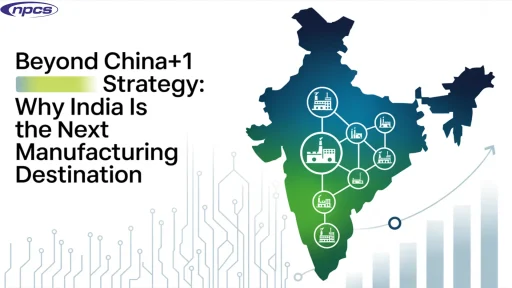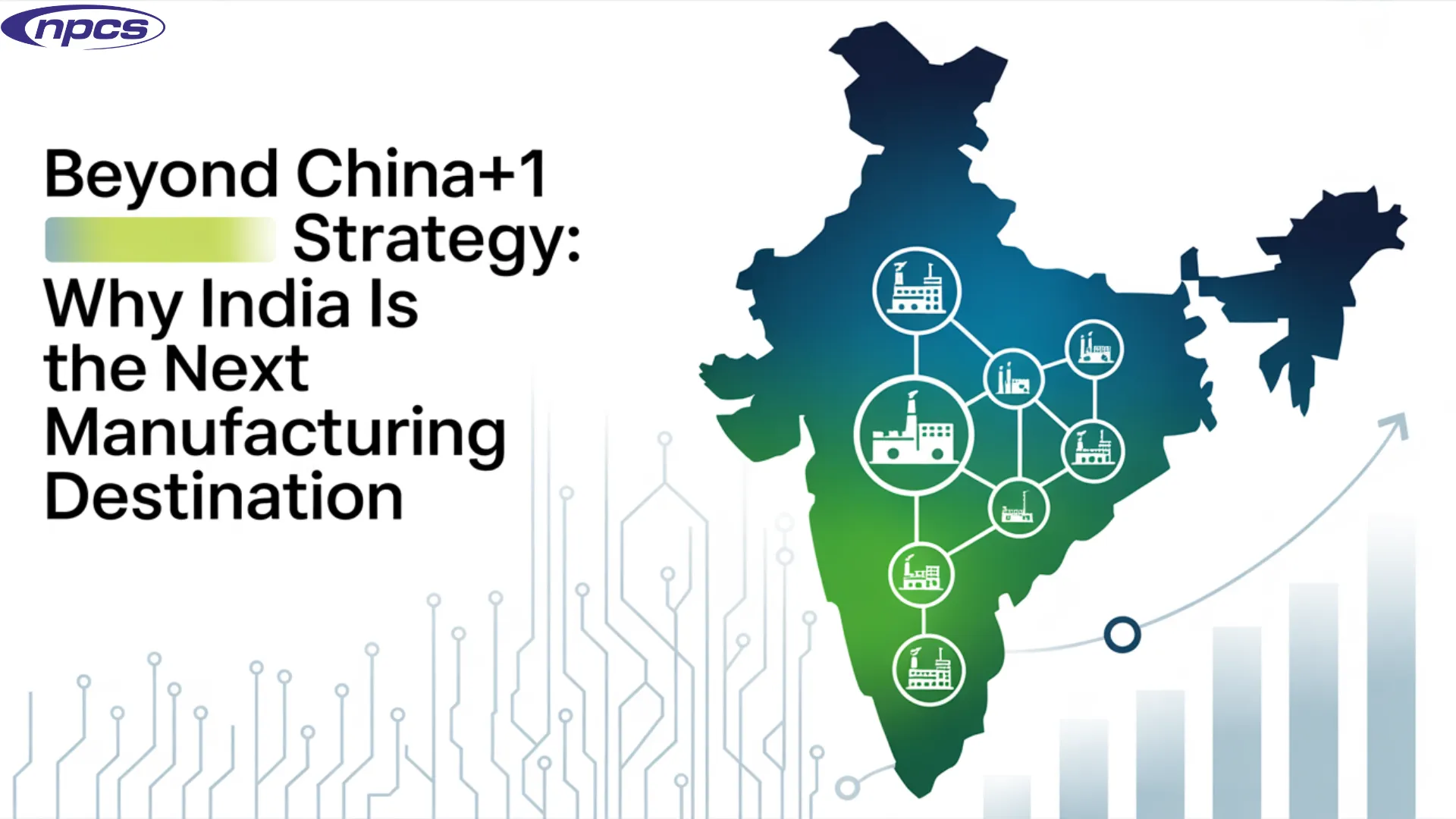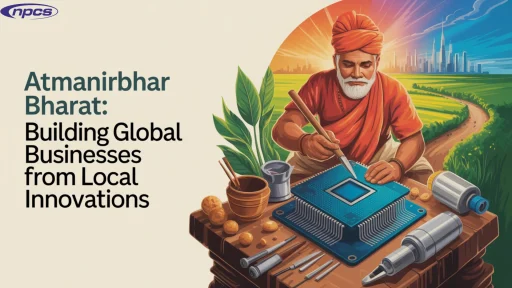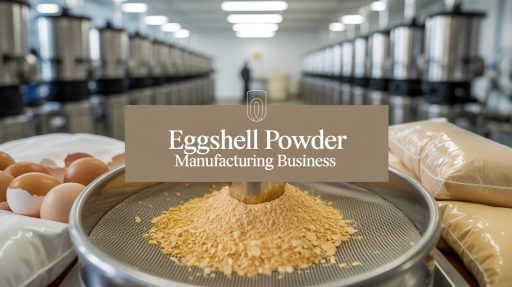A major change is taking place in the global manufacturing ecosystem. Its companies all over the world are implementing the China+1 strategy, which aims to diversify production beyond China in order to reduce reliance on a single market and eliminate supply chain risks. Although various Southeast Asian countries benefit from the number at the start, India is now taking the crown. With a very strong industrial base and very favorable demographics along with policy initiatives such as Make in India, the country is moving ahead at a fast pace to become the next manufacturing superpower globally.
The Rise of the China+1 Strategy and India’s Golden Opportunity
Due to the growing geopolitical tensions coupled with increased tariffs, the pandemic has caused a big disruption to the global supply chains making the China+1 strategy really popular. It makes an encouraging strategy for businesses to have some other manufacturing bases outside China to build resilience and operational flexibility.
India has actually proved to be a far bigger scalable and sustainable solution compared to countries like Vietnam and Indonesia. Synergies that fall in place with the right combination of cost advantages and skilled workforce under policy frameworks like Make in India place India right in the forefront to lead the next wave of global manufacturing.
Why India Is Outshining Other China+1 Destinations
1. Cost Competitiveness
One of India’s greatest strengths is the low-cost environment for manufacturing as far as China+1 strategy is concerned:
- Labor costs in India are almost 33 percent less as compared to China. This is extremely attractive for labor-intensive industries such as textiles, electronics, and auto components.
- Operational costs, such as electricity, warehousing, and land, are lower even in states such as Tamil Nadu, Maharashtra, and Gujarat compared to those in China’s Guangdong or Jiangsu provinces.
2. Skilled and Abundant Workforce
India has the world’s largest population in the working age bracket of more than 900 million:
- Around 1.5 million engineering graduates enter the job market annually, enhancing India’s ability to support high-tech manufacturing.
- Skill India, Make in India, and other initiatives are also further bridging this gap to ensure that global manufacturers get the right talent across all sections.
3. Proactive Government Initiatives
Its Make in India initiative, instituted in 2014, has been game-changing in making the country a manufacturing hub.
- Production-Linked Incentive (PLI) schemes have brought in above $30 billion across several sectors such as semiconductors, electronics, pharmaceuticals, and engineering vehicles.
- Make in India simplifies the regulatory framework and reduces corporate taxes, which attract more multinational companies to set up operations.
Sectoral Growth Under China+1 Strategy and Make in India
India’s response to the China+1 strategy is to deliver tangible results across major sectors.
Electronics and Semiconductors
Now the manufacturing of electronics in India is on a high rocky road:
- Currently, Apple produces around 7% of its iPhones in India through Foxconn, Wistron, and Tata Electronics.
- Micron’s $2.7 billion semiconductor plant in Gujarat is projected to be live by 2025.
- Under Make in India, manufacturers are entitled to capital subsidies of up to 25% along with exemptions from import duties and fast clearance processes.
Pharmaceuticals and Active Pharmaceutical Ingredients (APIs)
India is already known as the “pharmacy of the world,” and through the China+1 strategy, the role is being reinforced incrementally:
- India produces 60% of the world’s vaccines and 40% of generic drugs.
- Companies like Dr Reddy’s, Sun Pharma and Cipla are increasing the production of APIs to diminish dependence on China.
- The PLI scheme under Make in India has been a shot in the arm for pharma infrastructure.
Automotive and EV Manufacturing
India’s automobile industry contributes roughly 7.1% to GDP and stands to benefit from the China+1 strategy:
- Global giants such as Hyundai, Toyota, and Tesla have entered the EV manufacturing scene, with investments in EVs in Karnataka and Tamil Nadu.
- Make in India’s PLI scheme for advanced automotive technology has already seen investment to the tune of $8 billion.
Infrastructure and Policy Support Under Make in India
Make in India has been the fulcrum of the China+1 strategy and infrastructure development in India:
Industrial Corridors and Smart Cities
- India has created key industrial corridors such as Delhi-Mumbai and Chennai-Bengaluru to improve logistics and supply chain efficiency.
- Development of over 100 smart cities will improve urban infrastructure for manufacturing ecosystems.
Ease of Doing Business
The situation of doing business in India under the auspices of Make in India has improved considerably:
- Implementation of GST has simplified interstate trade.
- Single-window clearance and FDI reforms have had a positive influence on investor confidence.
- Corporate tax for new manufacturing units has been reduced to 22%, and is now in alignment with global norms.
Mobile Manufacturing Boom
Production of mobile phones in India has grown:
- From $3 billion in 2014 to $44 billion in 2024—an impact derived directly from the advantages of the Make in India and China-plus-One strategies.
- The Noida-Greater Noida belt alone contributes nearly 40 percent of total smartphone output.
Renewable Energy Manufacturing
India is also leveraging the China+1 strategy in green tech:
- A $4.3 billion PLI scheme under Make in India targets solar module production.
- India plans to install 280 GW renewable capacity by 2030, generating new supply chains for solar components and batteries.
Challenges on the Road to Becoming the Global Factory
India, despite its fast-paced growth, still faces hurdles to maximize the fruits of the China+1 strategy:
- Infrastructure Bottlenecks: Delays at ports, congested highways, and unreliable power supply can create issues for exports.
- Policy Conflicts: Disparities in state-level regulations throw up red flags for multinational firms.
- Import Duties: Hefty duties imposed on components such as lithium batteries deter investments in the growth of the EV ecosystem.
Nevertheless, corrective steps are in the making:
- The $1.4 trillion National Infrastructure Pipeline intends to modernize India’s logistics and transportation services.
- State-specific policies like Tamil Nadu’s EV incentives are giving 100% tax exemptions and land subsidies to manufacturers.
Future Outlook: India as the World’s Manufacturing Hub
The manufacturing sector contribution to GDP in India is expected to improve from 17% to about 25% by the year 2030. This vision is highly supported by the China+1 strategy and Make in India initiatives.
Key Growth Sectors:
- Semiconductors: Projected $63 billion by 2026.
- Specialty Chemicals: Exports worth $30 billion by 2027.
- Defense Manufacturing: Aims for 70% self-reliance by 2027 under the Defense Production Policy, powered by Make in India.
Infrastructure, innovation, and investment are all strategically focused from India to redefine its manufacturing dynamics. China+1 has thus transformed itself from being a contingency plan to fast becoming the new linchpin of global business continuity-and India would quickly emerge as its ultimate champion.
Conclusion
Resilience, scalability, and agility are prime manufacturing requirements in the new world order. The China plus one strategy is no longer an option; it is a must. With good cost economics, a young and skilled workforce, and innovative government support for Make in India, India is all set to become the next global manufacturing hub.
To businesses interested in pursuing long-term stability and growth, India is not merely an alternative to China; it is the future of global manufacturing.
Some More Links
Join With Us
Related Blogs
https://www.niir.org/blog/starting-a-silicon-crystals-business/
https://www.niir.org/blog/the-most-profitable-chemical-industry-business-in-the-philippines/#
Join us on YouTube
https://www.youtube.com/c/NIIRproject/playlists






